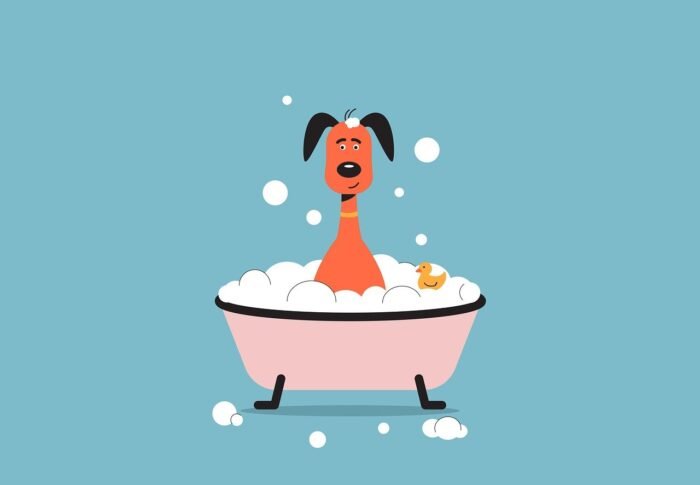
Tips for Successful Puppy Crate Training
Welcome to the wonderful world of puppy crate training! In this article, you will learn some helpful tips to ensure success in crate training your furry friend. From creating a positive association with the crate to establishing a routine, these tips will help make the process smooth and enjoyable for both you and your puppy. With patience, consistency, and plenty of praise, you’ll be well on your way to having a well-behaved and happy pup who loves his crate. Have you recently welcomed a new furry friend into your home? Are you feeling overwhelmed with the thought of puppy crate training? Don’t worry, you’re not alone! With the right tips and guidance, you can successfully crate train your puppy in no time. In this article, we will discuss everything you need to know about crate training your new puppy. From selecting the right crate to creating a positive crate training experience, we’ve got you covered. Let’s dive in!
Find products like these on Amazon!
Choosing the Right Crate
When it comes to crate training your puppy, the first step is selecting the right crate. The crate serves as your puppy’s den, a safe and comfortable space where they can relax and feel secure. Here are some tips for choosing the perfect crate for your furry friend:
Size Matters
It’s essential to choose a crate that is the right size for your puppy. The crate should be large enough for your puppy to stand up, turn around, and lie down comfortably. However, you don’t want the crate to be too big, as this may encourage your puppy to use one end as a bathroom.
Type of Crate
There are different types of crates available, including wire crates, plastic crates, and soft-sided crates. Each type has its advantages and disadvantages, so it’s essential to choose one that best suits your puppy’s needs and personality.
Location, Location, Location
Decide on the best location for your puppy’s crate. Ideally, the crate should be placed in a quiet, low-traffic area of your home where your puppy can feel safe and secure. Avoid placing the crate in direct sunlight or near drafts.
Introducing Your Puppy to the Crate
Once you’ve chosen the right crate for your puppy, it’s time to introduce them to their new den. Here are some tips for making the transition as smooth as possible:
Positive Association
Start by making the crate a positive and inviting place for your puppy. Place some treats, toys, and a comfortable blanket inside the crate to entice your puppy to explore.
Gradual Introduction
Don’t force your puppy into the crate. Instead, allow them to explore the crate at their own pace. You can start by leaving the door open and letting your puppy come and go as they please.
Mealtime in the Crate
One way to create a positive association with the crate is to feed your puppy their meals inside the crate. This will help them view the crate as a place where good things happen.

This image is property of images.pexels.com.
Find products like these on Amazon!
Creating a Positive Crate Training Experience
Now that your puppy is comfortable with the crate, it’s time to start crate training. Here are some tips for creating a positive crate training experience for your furry friend:
Establish a Routine
Consistency is key when crate training your puppy. Establish a routine for crate time, including regular feeding times, potty breaks, and playtime. This will help your puppy learn when it’s time to go in the crate and when it’s time to come out.
Use Positive Reinforcement
When your puppy goes into the crate on their own or follows a command to go in, be sure to reward them with treats and praise. Positive reinforcement will help your puppy associate the crate with good things.
Short Incremental Timeframes
Start by leaving your puppy in the crate for short periods, gradually increasing the length of time they spend inside. Make sure to praise and reward your puppy for good behavior while in the crate.
Dealing with Crate Training Challenges
While crate training can be a positive experience for most puppies, there may be challenges along the way. Here are some common crate training issues and how to address them:
Whining and Barking
If your puppy whines or barks while in the crate, avoid giving in to their demands. Instead, wait for a moment of silence before opening the crate door. This will teach your puppy that quiet behavior is rewarded.
Accidents in the Crate
If your puppy has an accident in the crate, clean it up immediately and avoid punishing your puppy. Accidents are a normal part of the learning process, so be patient and continue with the training.
Separation Anxiety
Some puppies may experience separation anxiety when left alone in the crate. To help your puppy feel more comfortable, leave them with a few toys and a blanket that smells like you. Gradually increase the time your puppy spends in the crate alone.

This image is property of images.pexels.com.
Gradually Transitioning Out of the Crate
As your puppy becomes more comfortable with their crate, you can start to gradually transition them out of the crate. Here are some tips for making the transition as smooth as possible:
Supervised Freedom
Start by giving your puppy supervised freedom in a small, puppy-proofed area of your home. This will allow your puppy to explore and play without the restraints of the crate.
Use a Playpen
If you’re not ready to give your puppy full run of the house, consider using a playpen as a safe space for playtime and relaxation. Make sure to include a few toys and a comfortable bed inside the playpen.
Slowly Increase Freedom
Over time, you can slowly increase your puppy’s freedom in the house, allowing them access to more rooms and areas as they demonstrate good behavior. Remember to always supervise your puppy during this transition period.
Final Thoughts
Crate training your puppy may seem like a daunting task, but with patience, consistency, and positive reinforcement, you can successfully train your puppy to love their crate. Remember to choose the right crate for your puppy, introduce them to the crate gradually, and create a positive training experience. Deal with any challenges that arise with compassion and understanding, and gradually transition your puppy out of the crate as they become more comfortable. With these tips in mind, you’ll be well on your way to successful puppy crate training. Good luck!
Find products like these on Amazon!







-
-
10 hours
Tagged Crate training, Nighttime Routine, positive reinforcement, Puppy training